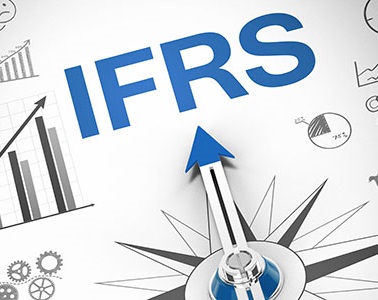9 Reasons an Agile-Based Development Framework Is Your Insurance Firm's Best Chance for Accelerating IFRS 17 Implementation

As 2021 approaches its halfway mark, many insurance companies are also ramping up their efforts to prepare their systems and processes for the upcoming implementation of IFRS 17. This new accounting guideline for insurance contracts is geared towards improving transparency, and it's set to overhaul how insurance contracts are perceived in financial reports. Insurance companies that are anticipating this change, however, need not wait until the first day of 2023 to implement the IFRS 17 standard.
Companies with the capability to accommodate the changes brought about by the new accounting guideline have the freedom to adopt it as soon as they possibly can. Such a move will allow them to completely integrate the guideline into their systems, iron out possible issues in the integration process, and be fully ready once the implementation date arrives.
Making the shift from IFRS 4 to IFRS 17, however, is easier said than done. Typically, it takes about 14 to 18 months to ensure that all relevant integration pain points are addressed and that an insurance provider can successfully come up with accurate financial reports that adhere to the IFRS 17 standard. Time is of the essence for insurers, and for many companies that have yet to initiate the implementation process, it's almost run out. One way that insurance companies can hasten the process of successfully implementing the IFRS 17 standard within their own establishment is by adopting an agile-based development framework.
What is an Agile-Based Development Framework and What Does It Bring to the Table?
The umbrella term “agile” refers to a set of overarching principles centered on iterative development. Through collaboration between cross-functional teams, an organization is able to come up with software solutions that will allow it to achieve its goals and requirements. The term “scrum” is a subset of agile, and it refers to maximizing the available production time to come up with a particular set of practices that should be followed to ensure that a component is consistent with the rest of the framework. Adhering to these principles empowers companies to increase their output, better anticipate and cope with changes, and remain in control of the project and the resources needed to complete it.
Here's how sticking to an agile-based development framework can help companies meet the demands of the new accounting guidelines included in IFRS 17:
- The approach allows the company to remain flexible and implement enhancements in their processes even as they go about improving the other components of the system.
- Keeping the process as small or as lightweight as possible reduces the resources and time needed to execute the implementation, thus limiting risks and overhead costs.
- As different teams collaborate to enhance the overall implementation process, the team members are able to grasp the changes that the system undergoes, and this provides them with a comprehensive understanding of the final process.
- Considering the input of different teams during the implementation process empowers the company to tap out-of-the-box solutions as well as steer clear of poorly fitting methodologies and other options that would require the teams to keep on duplicating their efforts.
- At the same time, this also gives them every opportunity to examine the components of the existing systems and determine if these elements can still be used in the new process that they are coming up with.
- Teams that depend on agile frameworks have access to reports and accounting entries that are built within the system itself, and they can use this as a reference to predict how the changes they've introduced will affect the expected outputs of the new process that they are working on.
- With this knowledge, the teams are able to clearly see, understand, and address the vulnerabilities of the system and the quality issues that they may come across as they continue to work on the implementation process.
- The level of focus afforded by using an agile-based development framework allows the members of the concerned teams to put in the necessary efforts to ensure the success of the implementation, all while minimizing the resources that the project consumes.
- The rest of the company, on the other hand, can keep on working on their existing tasks and projects that will help them gain the needed momentum to achieve their greater financial goals.
Now, in order to reach the minimum level of compliance before IFRS 17 is implemented in full force, companies should be able to bring together team members from the actuarial, risk, finance, and IT side of the business. Early on, they should also be able to establish what their goals and objectives are for the IFRS 17 implementation and determine how the new guideline will impact their existing processes, policies, and systems. This way, when the company starts looking for a solutions provider that will help them implement the IFRS 17 standard, they'll be able to stay on the same page and find ways to reach their common objectives.
839GYLCCC1992



Leave a Reply